Self-taught free machine embroiderer Stacey Chapman has enjoyed such success with her new-found craft over the last seven years that she wants every budding textile artist to share in its pleasures. She has developed a range of kits to help beginners get started and holds her own workshops across the UK, and also for Janome in north-west UK. She even holds one-to-one training in students’ own homes around London and the South-East.
Stacey’s training in illustration gave her a head start when she turned her hand to creating life-like thread paintings using freehand machine embroidery. Stacey became inspired after watching Kirstie Allsopp’s Channel 4 show and began her business Art Sea Craft Sea in 2013, initially creating stitched pet portraits to commission. She is known for her portraiture and fashion illustration has exhibited in local galleries and also nationally in Crufts, Countryfile Live and Kirstie’s Handmade Fair.
More recently Stacey has launched a new range of vintage style portraiture and fashion illustrations featuring fifties glamour and honouring the upcycled retro fabrics that too often are secreted away in drawers. For these she has revisited a technique she began at school, combining multi-media and up-cycled vintage cloth/thread.
After exhibiting with fellow local stitch artist, Emily Tull, Stacey developed a range of pieces depicting stitched fishermen. She has a lifelong fascination with faces and uses pen, ink, fabric, pencil, paint or whatever is to hand to create her pieces.
Stacey writes her own column for Love Sewing Magazine and has had her artwork featured on the front cover of Stitch Magazine and her project has appeared inside. She has been featured in numerous online blogs and publications, everything from Coast, Dogs Today to Waitrose Weekend!
Stacey’s workshops are held at John Lewis for The Makery, Kirstie Allsopp’s Handmade Festival, Janome private groups and her own workshops at the Sands Hotel, Margate, for which she was nominated for a Travel and Tourism Hospitality award in 2019 and in the same year was also shortlisted for the National Needlecraft Awards. She teaches workshops for the Women’s Institute HQ Denman and at the NEC Sewing for Pleasure Show. Her new online workshops are in the pipeline.
We asked Stacey to take us through one concept-to-creation project, for which she used hand-stitch and, in particular, couching; she shared how the trauma of her mum’s alopecia hit her family and yet, through the impact of her wig, provided inspiration for Stacey’s most emotive project ‘Exogen’.
Name of piece: Exogen
Year of piece: 2019
Techniques and materials used: 60 x 45cm, Materials: Vintage pillowcase, artists hair and tights. Techniques: embroidery, couching and applique.
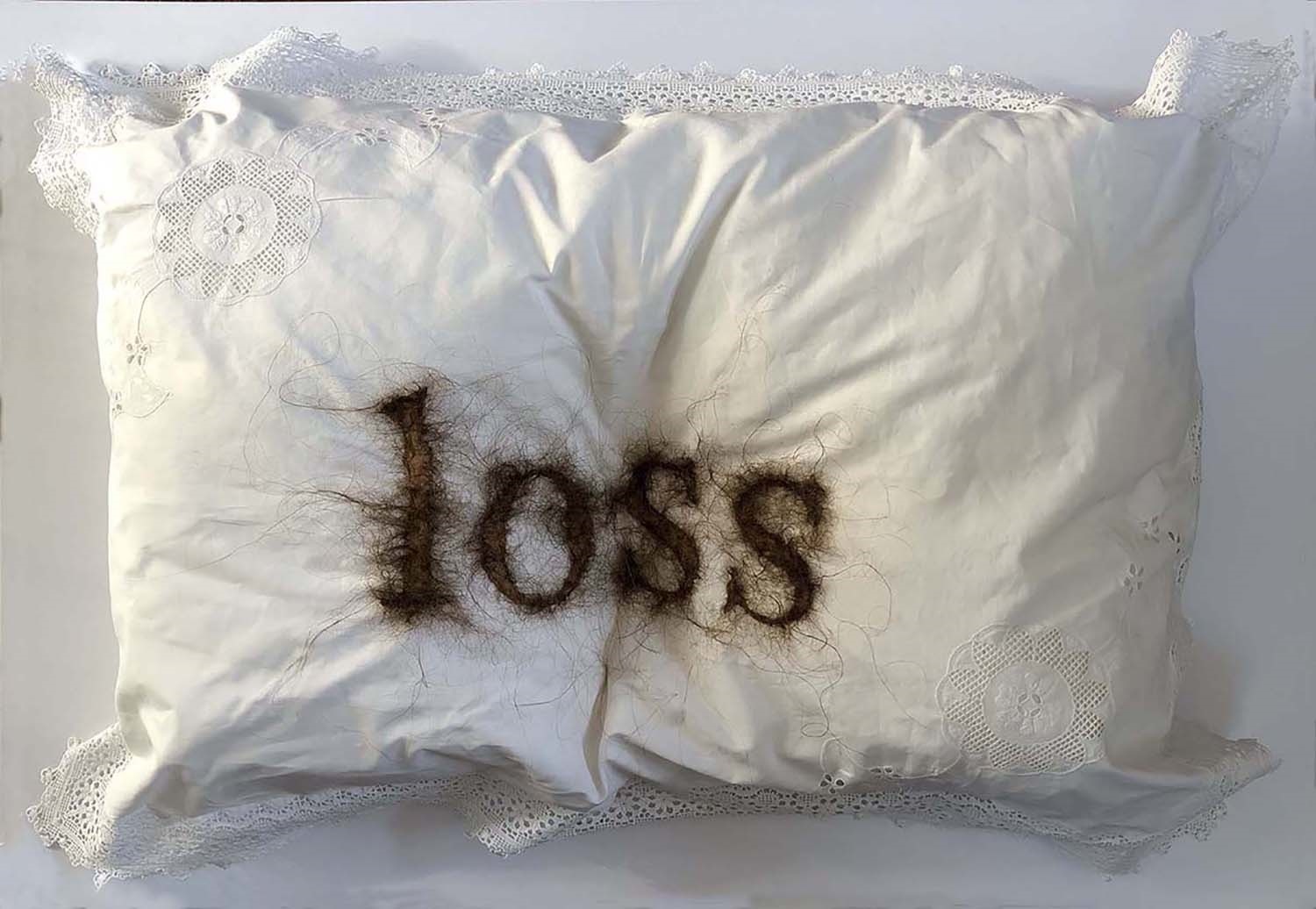
Exposing raw, unexpressed energy
TextileArtist.org: How did the idea for the piece come about? What was your inspiration?
Stacey Chapman: My mother has full alopecia. Growing up she always had really big hair. As a glamorous woman, she has always taken a great deal of pride and care about her appearance as it matters greatly to her. As her hair started to fall out, directly after a traumatic event, she started disappearing in confidence before our eyes. Her hair falling out seemed to be symbolic of her world as she had known it, evaporating uncontrollably around her. It was so difficult to watch. It was also difficult to see strangers respond to her thinning hair and how judgemental and dismissive people can be when faced with an appearance different to the norm.
A few years later, thanks to the discovery of a range of fantastic wigs, mum found a new lease of life, took her life into her hands, grew in confidence before our eyes and embraced a shiny, golden age. The hair took her life away and the beautiful thick head of fake hair, breathed life back into her. I am aware of the power of these wigs and I feel compelled to make work about them, in fact I have about another five artworks around the subject incubating in my mind, waiting to emerge.
I spend everyday consumed with sewing threads. I look at these strands of fake hair, that have so much importance in my mother’s life and I cannot help but pull the comparison with my obsession with my own thread strands and my mothers fake hair strands. Each strand weaves together with the next to create something bigger than itself. Something life affirming. Something previously lost and then re-found. A fitting in. A beauty. A creation of a persona that slots you back into the world that previously you were removed from. These differing strands give both of us life and acceptance in different ways.
I studied illustration at university, but discovered halfway through the course, that fine art was where my heart lay. From then on I specialised in printmaking, used in a fine art context. I used the image making process to try and work out my feelings or ideas around a subject matter. Once engaged wholehearted in this process, I had to sleep with a notebook by my bed as I would wake up regularly with utterly exciting ideas. It was as if I were a vibrant ideas conduit and the artworks came through me thick and fast. This process was thrilling. Once that creative allowance door had been opened, there was no going back.
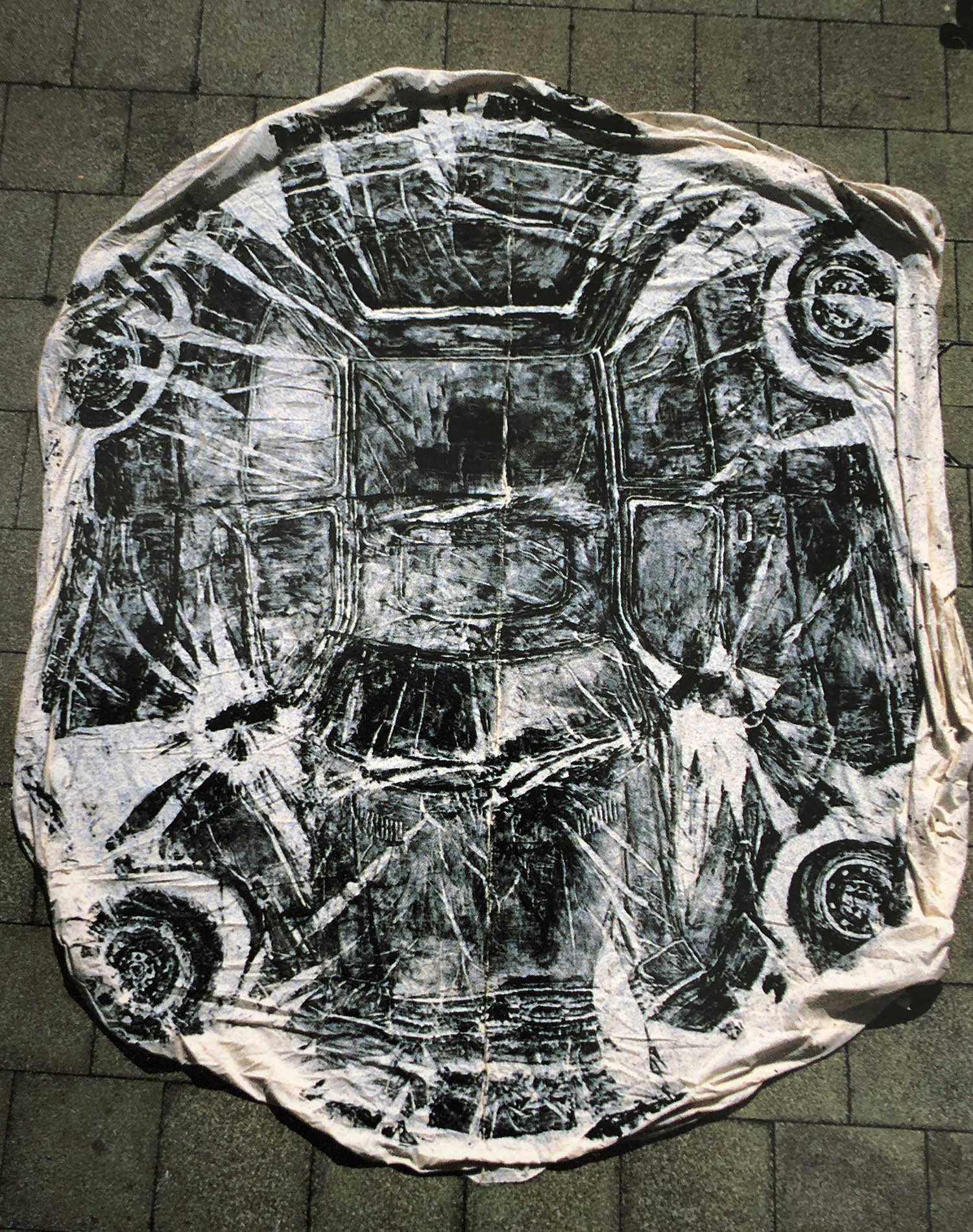
I used cloth as the lifeblood of that body of work and wrapped fabric around objects I had inked, everything from bicycles to cars. Transforming everyday objects into hand-burnished printed artworks.
Sadly, when you have the rug pulled out from under you when you leave art school, as well as the shock of the indoctrination to the real world, it can shut your creative conduit door and that was indeed the case with me. My creative self curled up inside of me, blackened and rotting away, for 13 years. Thankfully in 2013 I discovered freehand machine embroidery and unexpectedly my artistic life began again through Art Sea Craft Sea, creating portraiture, fashion illustration for local galleries and workshop samples.
Back to the present day, with so many years passing since I had allowed this deep, meaningful creative expression process to work through me, the fear of truthful expression is still very much present. However, these emotionally challenging works have been brewing and begging to be expressed through me for about 10 years. I have shied away from creating them, as it would mean having to deal with the accumulated, unexpressed baggage from life. Ultimately, if the work is bravely created and shown, you open yourself up to putting your innermost fears, vulnerabilities and emotions on public display, with the potential criticism or dismissal that can bring. This is possibly the scariest thing I can think of. Almost as scary as not making it!
I have a fierce belief that the best art always comes from raw, unexpressed energy. And the reason the best artworks known to man resonate hundreds of years later with viewers, is that visceral energy is still perceptible through the work. The great works have a luminosity that highlight them in any crowded room with an imaginary spotlight, beckoning viewers in like a honey pot, to gaze and lose themselves in its powerfully expressed presence. People can sense the power of that raw energy involved in its creation.
It is downright terrifying to expose this inner raw shadow in need of light, but, it is also a tantalising invitation and opportunity to step into your best creative self and create potentially the most important work of your life. To expose your inner voice – that no other person that has ever lived, or will ever live, will have again – will leave the world, possibly long after you are gone, with your indelible finger print for people to use as their own inspiration.
This soft sculpture piece, named ‘Exogen’ is my toe dip into this raw, deep exposure and I do hope that the power of the artwork resonates on an emotional level with its viewers.
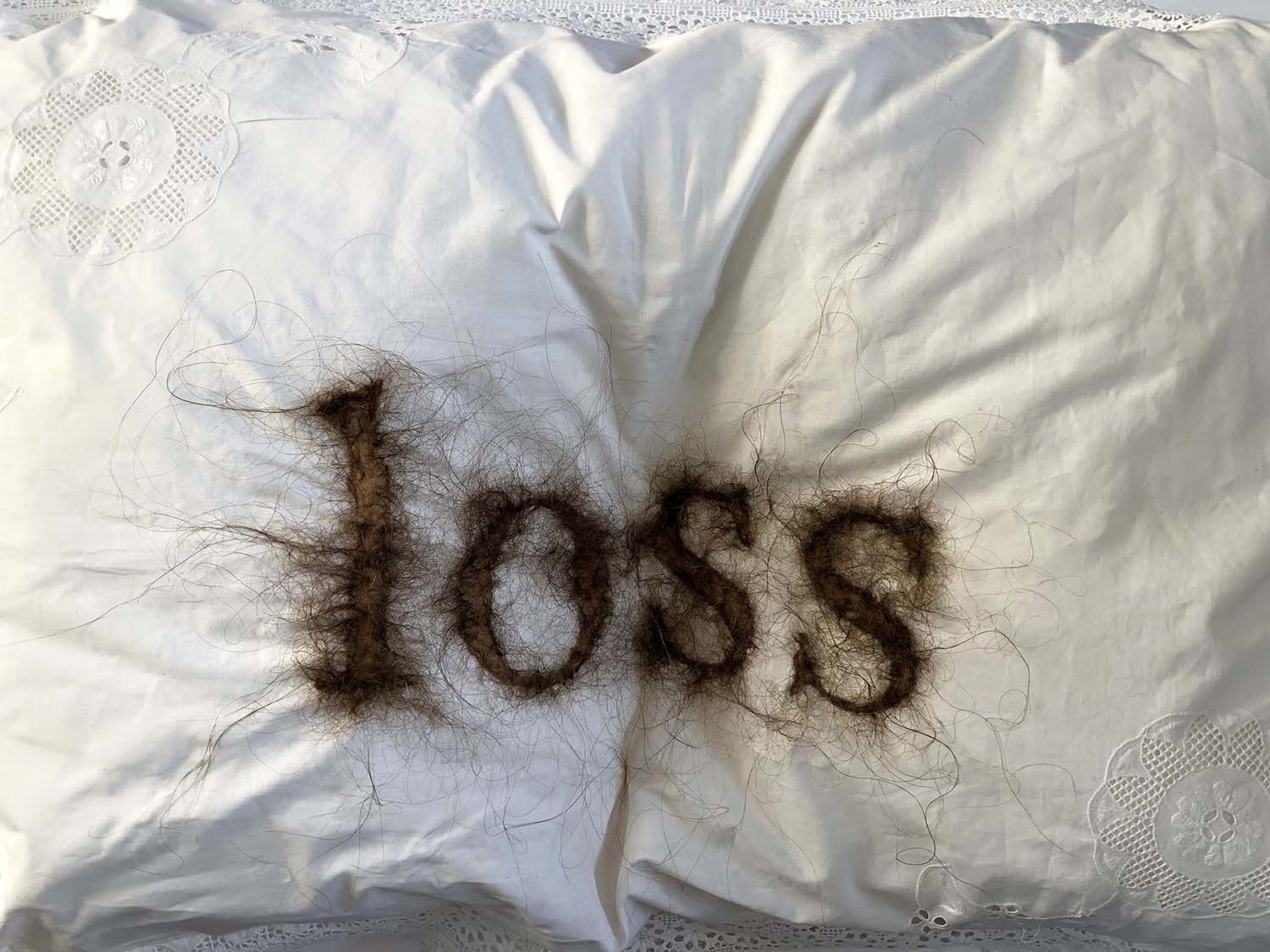
What research did you do before you started to make?
I didn’t research the piece as, for over a year and a half it was more of a rumination and gestation period in my head. As the concept came to me, I started collecting the strands of hair naturally lost each time I washed my hair in the bath. Fishing the strands out from the water, knowing they would be used for the artwork became a part of the preparation for outing this difficult emotional backstory.
The work started out as a blurry vision of wanting to use my own hair to embroider with to express feelings about my mum’s loss of hair and started to formulate the connection between hair and threads in our respective lives. I immediately went to the obvious solution in my minds eye of ‘loss’, trying to keep it as simple and direct as possible. My other ideas didn’t vary very much from this concept other than varying the spelt out word.
However much I tried to mentally build another image or word, my mind always pulled me back to the universal word of ‘loss’ – because ‘loss’ encapsulates a large part of the experience of life. And it also spoke to the fact that it was initially about mum’s hair falling out, but was actually the much bigger impact on her life and the world around her that I wanted to evoke through the work; as well as being an open ended invitation to the viewer to bring their own emotional response to the difficult subject matter. The subject matter, I believe, is much easier to engage with due to actual hair being central to the work. This is because we all have our own hair associations, for some, it may be your crowning glory or the making of your looks, or you may have too much, or not enough, it may be the ‘wrong’ colour, shape/kink/curl/straightness, a visual reminder of illness or a reminder of the ageing process, or … fill in the blank… But we all understand its power when we have felt or witnessed the impact it can have on our own lives or for the people around us.
I knew that sourcing the right pillowcase was the key to making the artwork come to life – and the fear of progressing the piece, from my mind’s eye into actual being, depended upon this. That is why the piece took a year and a half to create.
The delay allowed my bravery to catch up with my creative concept. The artwork was catapulted suddenly into life by circumstance. I had an unexpected emergency operation on Christmas Day 2018. Whilst being kept awake by fellow patients throughout the night, I realised, that if not now – when? When life throws you off balance and makes you wonder how many more sobering moments there will be in this lifetime, and how many other chances there will be to make the work, the powerful tilt of perspective and life-force serves to momentarily eradicate fearful procrastination. What a gift, when viewed in retrospect. I immediately decided to use the emotive time wisely by spending hours on the NHS wifi, finding antique pillowcases for finally bringing my piece to life.
Unwashed tights and pillows
Was there any other preparatory work?
An essential component for the piece was finding the correct font and size for the lettering. The language of ’type’ is very powerful in and of itself, so it was essential that this element was correct, otherwise the entire message could be lost in translation. I printed off a number of versions of letters and sizes, cut them out and laid them on the pillow. I began tweaking with different typefaces and sizes until I was happy. I traced and then cut out the final version in paper, and then readied myself to start sewing!
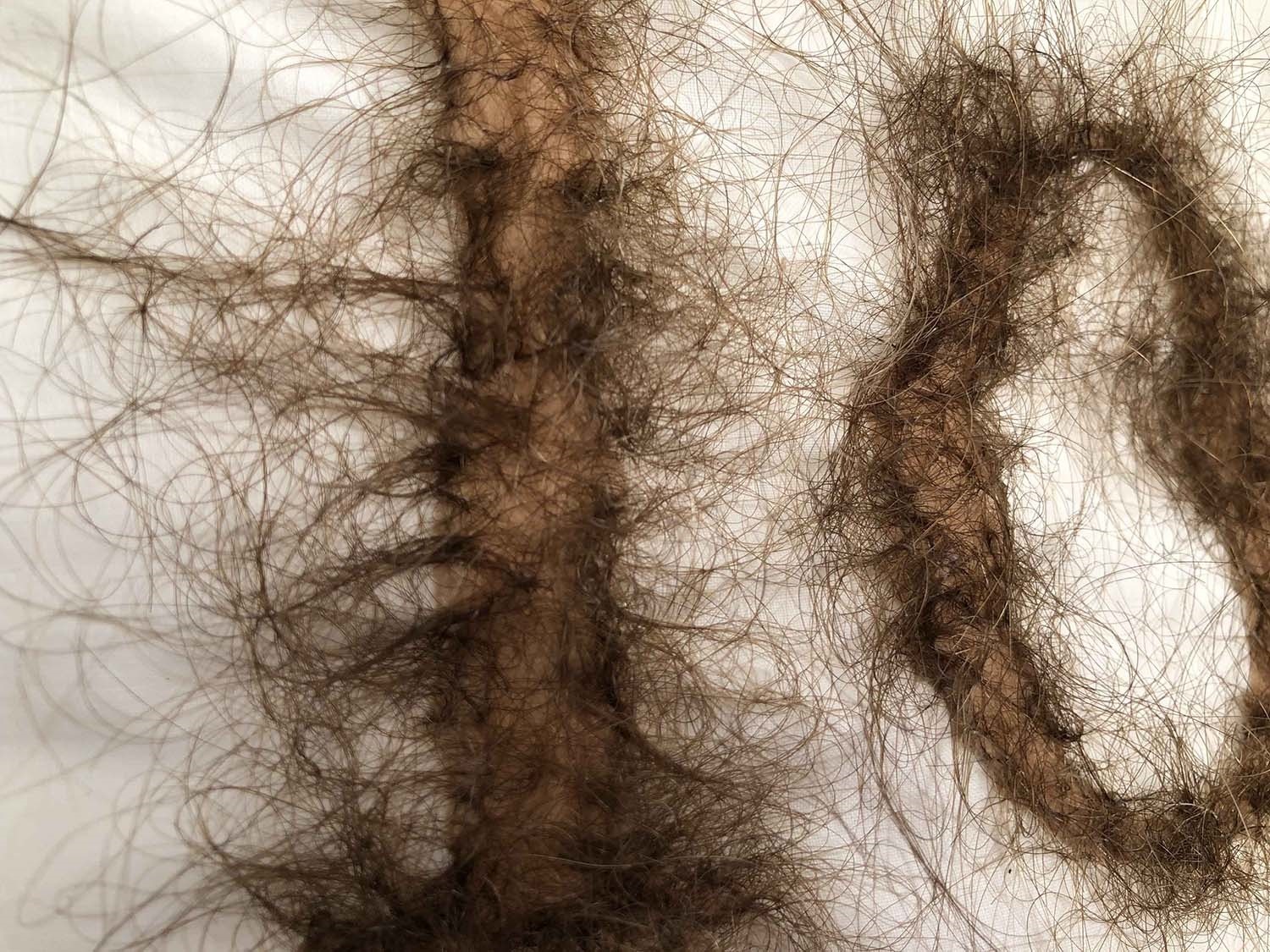
What materials were used in the creation of the piece? How did you select them? Where did you source them?
As well as my own hair, I used a pair of my used tights, unwashed, as I wanted to add as much ‘icky’-ness to the piece as possible for maximum impact and to enhance the raw, difficult nature of the subject. The reason I wanted to use tights as the base for the lettering was because when you wear a wig and you still have some hair, (which was the case for mum at the beginning), you wear a net below the wig. It is essentially like putting a pair of flesh coloured tights on the scalp, to conceal your natural hair strands. Therefore, I wanted to show this as my base – plus I wanted the hairs to look as if they were emerging from a scalp, to heighten the illusion of the hair coming up from the skin, sitting on top of the pillowcase.
To stuff the pillowcase, I used my old pillow, that had all the usual signs of use – again unwashed. I wanted to depict the finished work to look as if a head had been resting on the pillow, having made its mark and left its imprint, to show a suggestion of someone just having been there and then gone. To achieve this, I took very strong thread and, at the bottom centre of the pillow, I sewed through the whole pillow as tightly as possible with small, taught stitches, to compress a circular area where the head would have been. When I stuffed the pillow in the embroidered pillowcase, I simply used a couple of tack stitches through this area to show the depressed area of the pillow, beneath the finished embroidery.
The sourcing of the pillowcase, as mentioned earlier, was through Ebay. It was such a joyful exchange. When searching, I was so moved by the short description of the antique pillowcases, with my mind inventing stories of all of the people that had laid their heads on them, the linen absorbing all of the sweat, blood and tears cried of both joy and pain within its environment. The pillows would have been a daily witness of incredibly important moments in peoples’ lives, mainly renewal of life and probably some death. The pillowcase itself was visually perfect too, with it having just enough embellished edging, but plenty of empty space in the middle for my stitched embellishments. I asked the lovely seller of the pillowcase, Wendy, to write me the full description of the vintage linen. Here are her words from when I told her of my project plans:
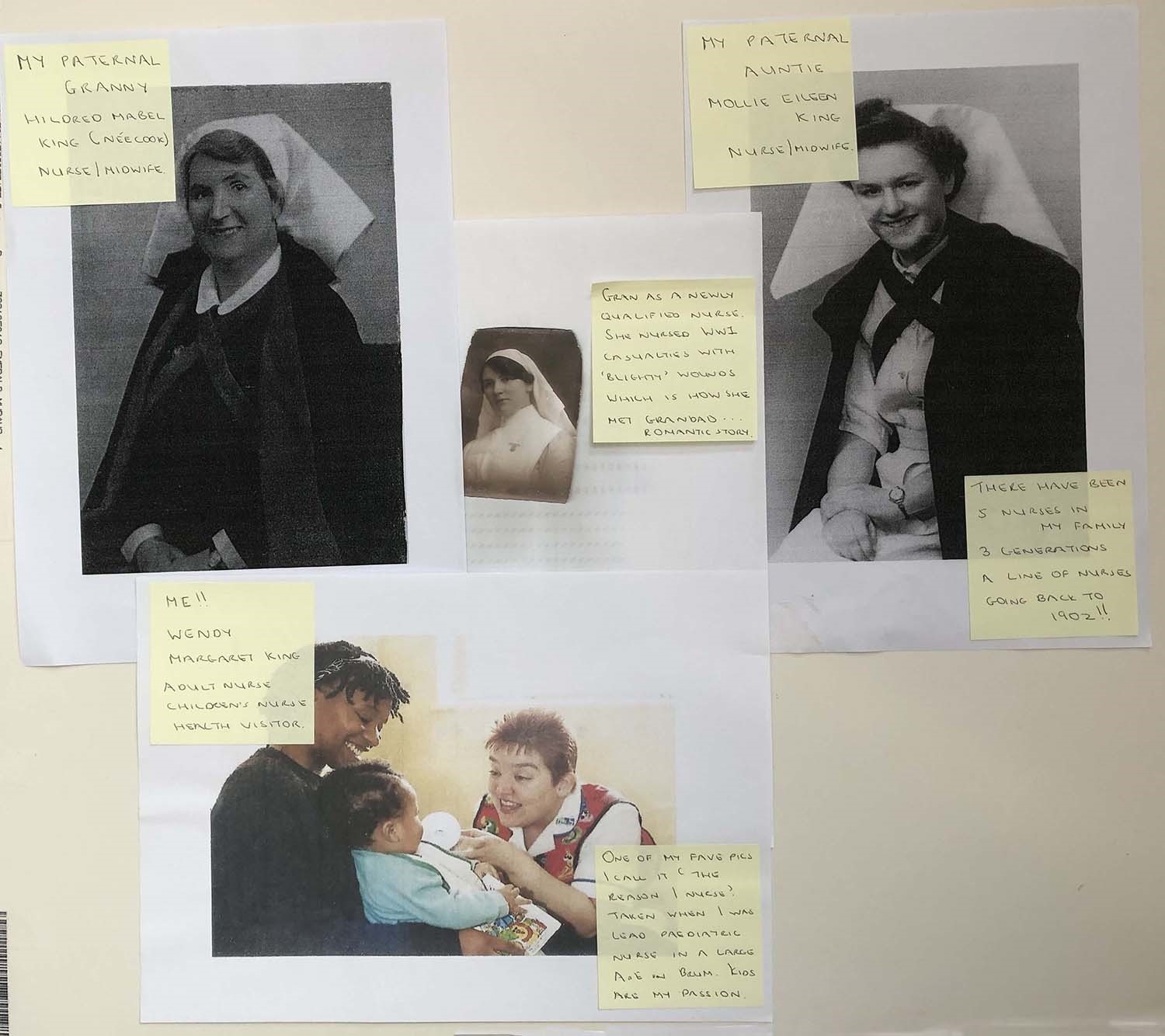
“I make felt and love all things of a textile nature…this is very much a case of serendipity!
The pilllowcases were made for my gran’s maternity home which she ran in Barry after years working as the district midwife in Merthyr. Ladies would pay for her to deliver their babies and then have some time ‘lying-in’ afterwards. No doctors there so entirely midwife led care.
They came to me via my auntie Mollie who, like gran, was a nurse/midwife. She spent years in what we now call Tanzania (Tanganyika) teaching student nurses/midwives. I got my deep and abiding love for all things African listening to her stories when she returned after the country gained independence.
Like both of them I am a nurse (adults/children), but not a midwife. I now work in public health as a health visitor. The money I raise from selling a variety of things helps fund a weekly public health clinic in my ex-husband’s village of Chelekura in the East of Uganda. A primary school teacher runs the clinic using the ‘Where there is no Doctor’ book. I pay him a small quarterly stipend and supply the drugs needed free of charge. In the first 18 months of the project no-one in the village had to go to the local (!) hospital saving the villagers both time and money.
My aim is to go and live/work in Uganda when I finally give up on the NHS…or it gives up on me!”
Not only was Wendy kind enough to offer this full description, she also went out of her way to send photographs of her nursing family history with notes. I am 100% sure that lying in my own hospital bed, Wendy was meant to be my last puzzle piece to make my artwork happen. I am very thankful for her part in this process.
What equipment did you use in the creation of the piece and how was it used?
The equipment was very basic – simply: needles, a hoop, stabiliser, Solvy, invisible thread, strong upholstery thread, fabric scissors, my printer, pencil, paper and embroidery scissors.
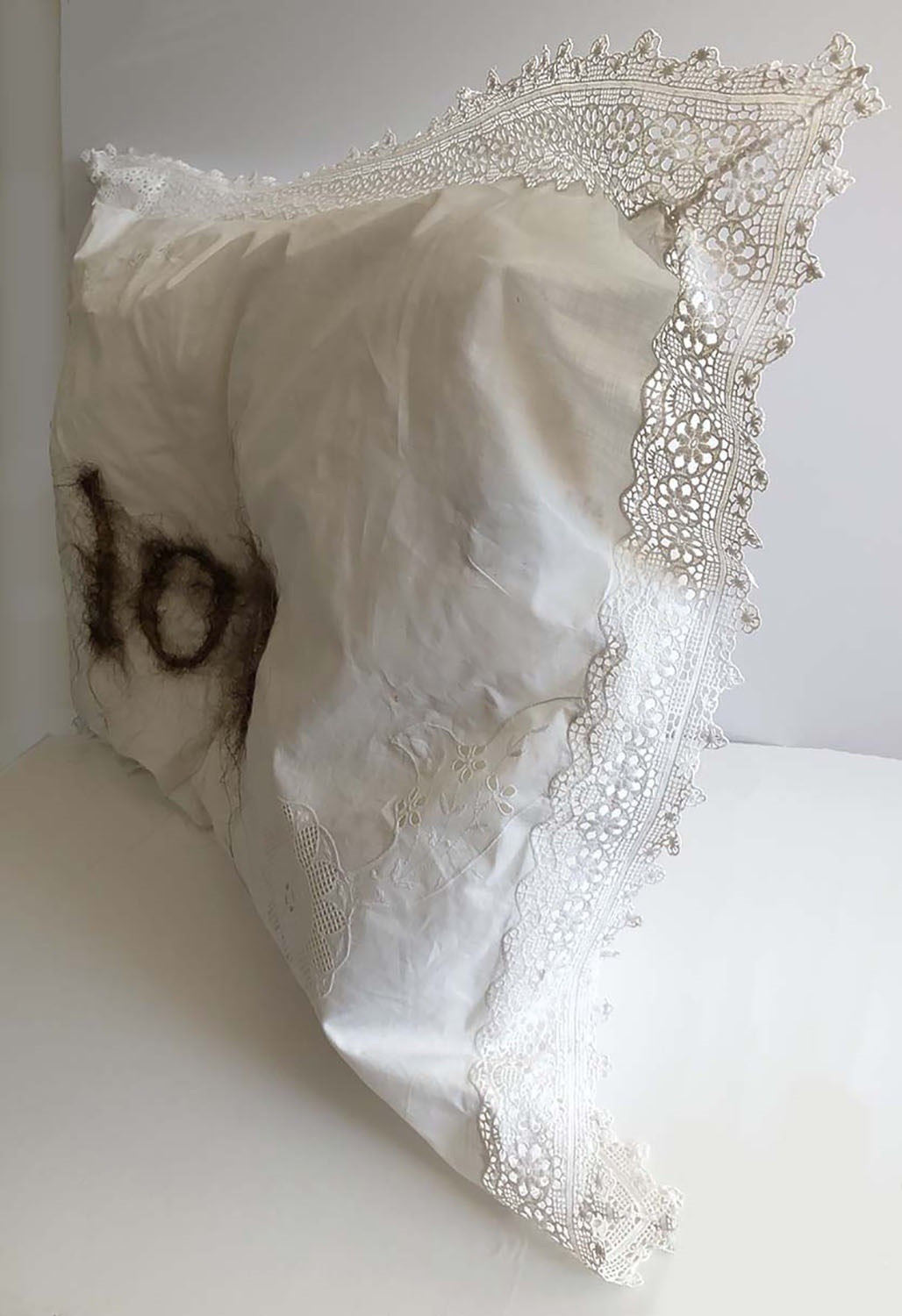
Couching, stitching and stabiliser
Take us through the creation of the piece stage by stage
I established the font and size of the lettering by using print outs, allowing me to experiment with various fonts. Once finalised, I cut out the letter shapes in stabiliser. I hooped a length of Solvy stabiliser and tacked the tear-away stabiliser letters onto the hooped film. I then cut out rough shapes from a pair of my tights slightly larger than each of the four letters. I tacked the four pieces of tights around the edges, ensuring they covered all of the stabiliser letters. Once I was sure they were stretched and correctly placed, I carefully trimmed the tights around the edges to create the finished letters. I then untangled and placed strands of my hair on the first cut-out letter at the edge. I used invisible thread to carefully couch down the middle of the hair strands to hold in place.
I used simple straight stitches for the couching and kept the stitches as small and neat as possible, as I didn’t want them to be seen. I left a small gap, placed the next few strands next to the last sewn clump and couched the next hairs in place, catching the very edge of the letter created from tights with the needle as I went. I continued this process around the edge of all four letters until they were evenly full, edged with hair. Next, I carefully cut out each letter from the Solvy and laid it on the pillow. I used a ruler to ensure ‘Loss’ was positioned in a straight line and evenly spaced, drawing small pencil marks in the corners for guidance.
One letter at a time, I tacked each letter in place. Once secure, I took the final remaining strands of hair and I embroidered, through the pillowcase, the stabiliser and tights, with each stitch creating the odd, single back stitch per strand before adding another random hair stitch around the edges wherever there was a slight gap. Once happy with the even filling of the hair, I tore away the stabiliser and then took a paintbrush and a little water to melt away the rest of the water-dissolvable stabiliser. This left a gluey residue, which I used to make some of the hairs stiff, sticking them down in certain places.
Once the pillowcase was finished, I started sewing tightly on my old pillow with a number of short, tight stitches before tying off and starting again next to it. My aim was to compress the pillow padding as much as possible where the head would lay. Once I had completed a full circle of compression, I inserted the pillow into the pillowcase. I finished the piece by adding a few tack stitches through the pillowcase, stitching through the pillow itself to show the depressed area on the pillow under the embroidered work. The final touch was to tease out the sewn hairs, separating and placing to fill any gaps, and arranging until I was happy with the overall look.
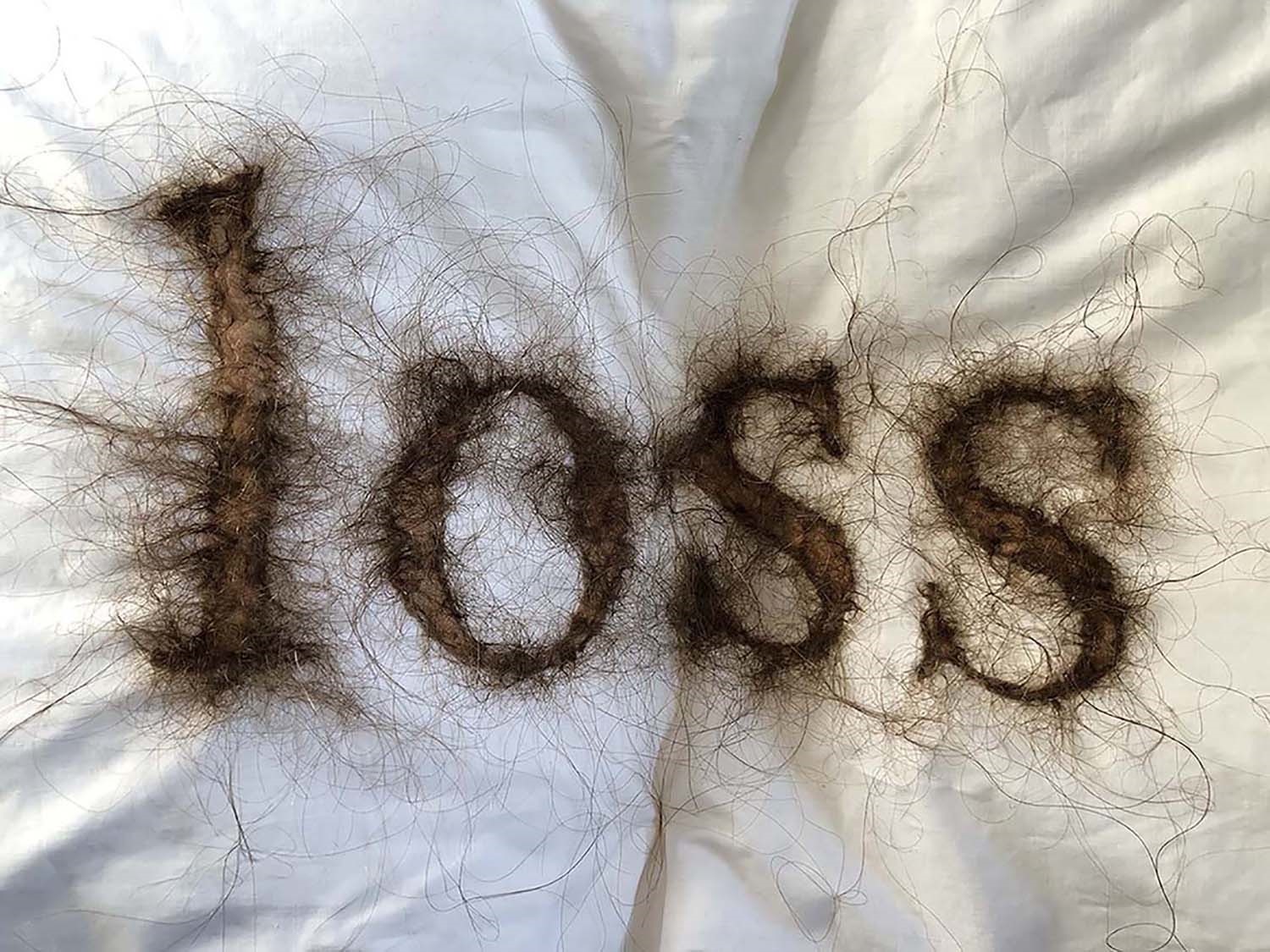
What journey has the piece been on since its creation?
I have only exhibited the piece twice thus far. The first time was in Medway, Kent, May 2019 by the Brown Bread Collective. The exhibition was called the ‘Circle of Life’ as part of National Dying Matters Week.
Its second outing was for the inaugural exhibition by S.E.W., The Society for Embroidered Work in Clerkenwell, London. I was thrilled to have had so much contact by various people during and after the exhibition, telling me how moved they were by the work and their own stories that the piece brought up for them. That made me feel very satisfied indeed as, for me, the mark of the success of the piece is as to whether or not it moved people. And from the feedback I received, that certainly seemed to be the case.
For more information visit www.artseacraftsea.com
What struck you about Stacey’s project? Please let us know in the comments below.
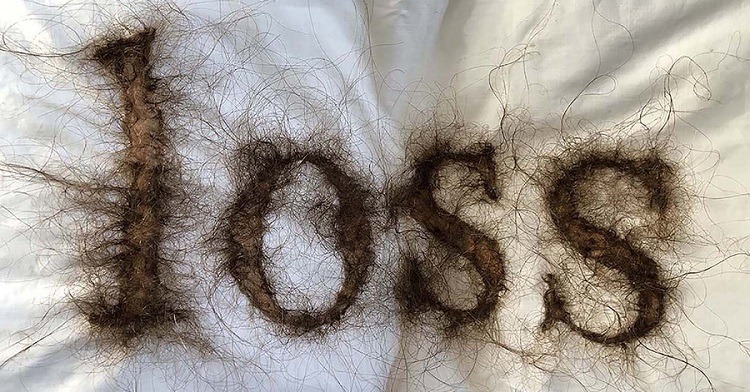

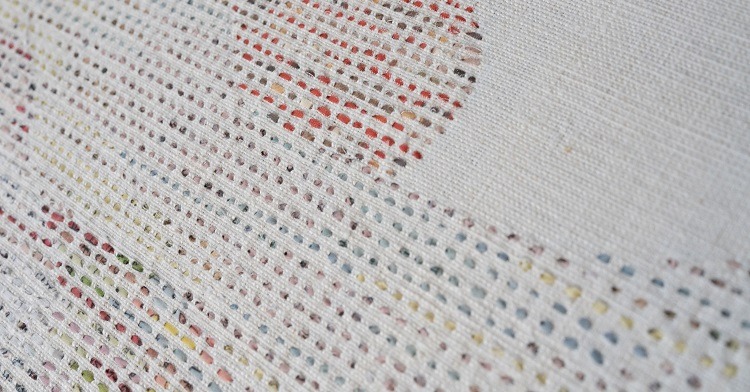
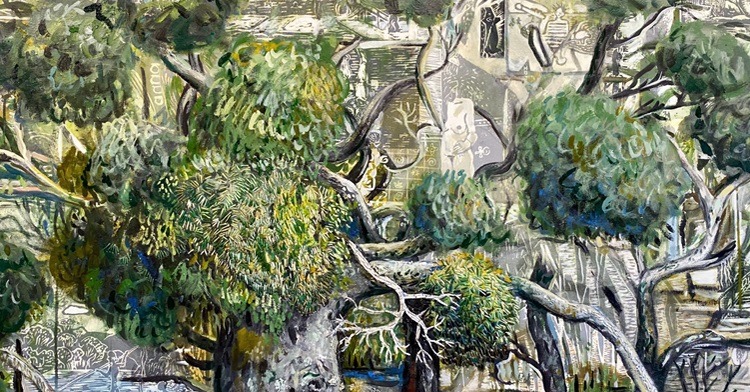
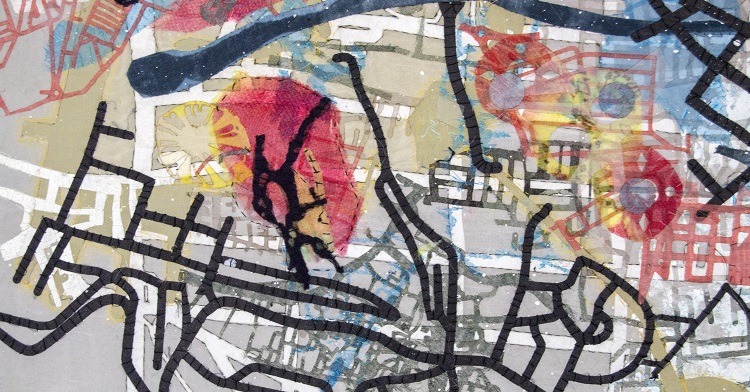
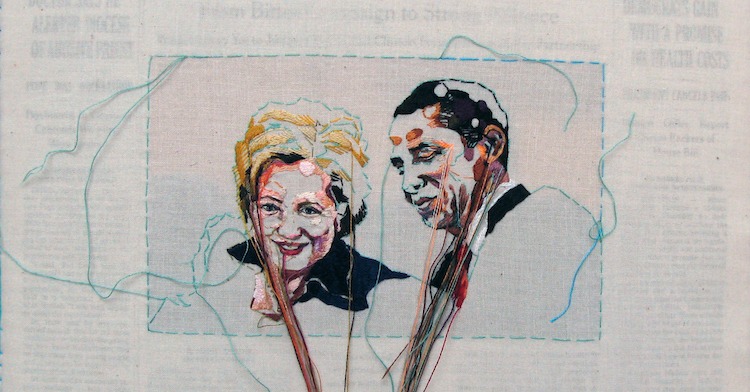
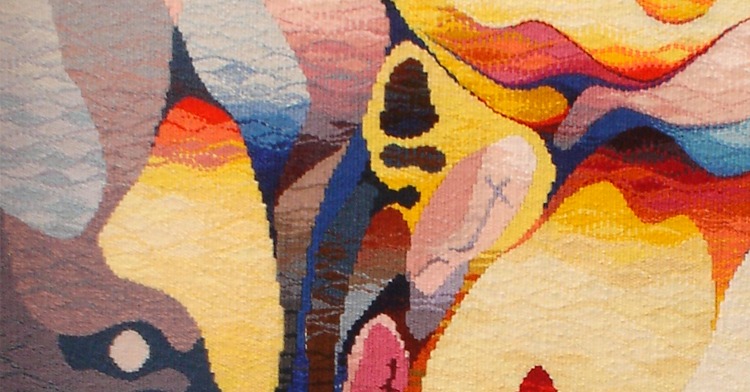
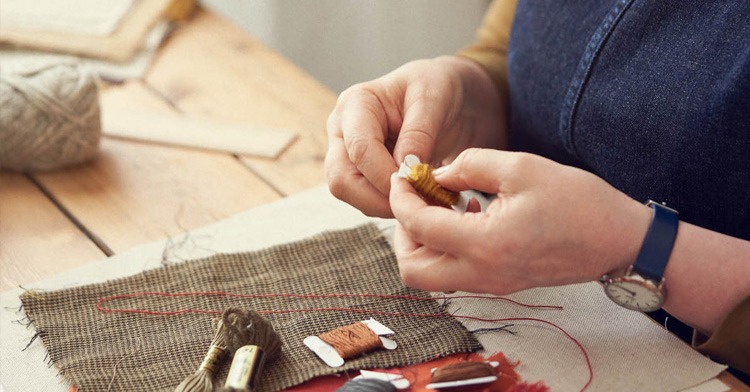
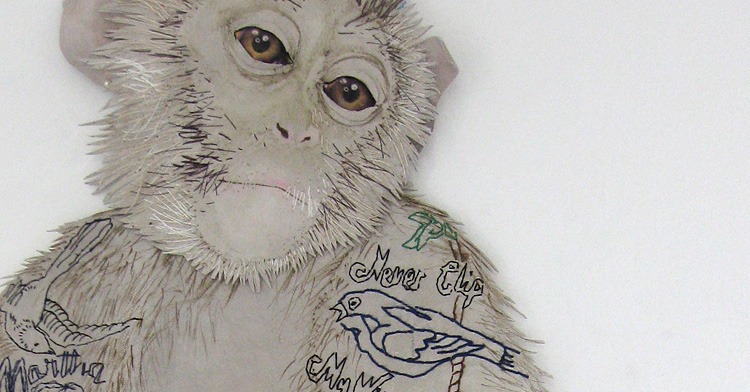
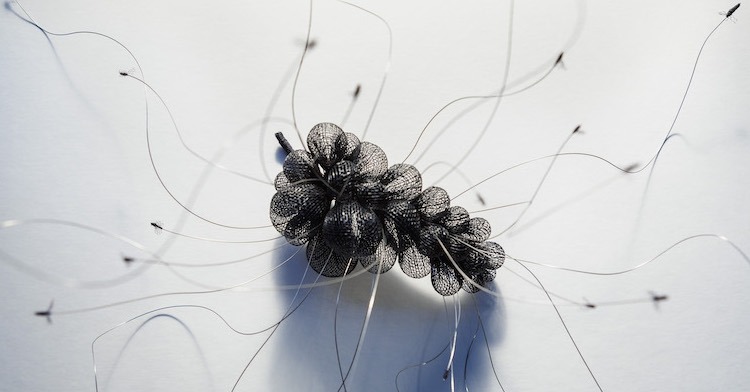
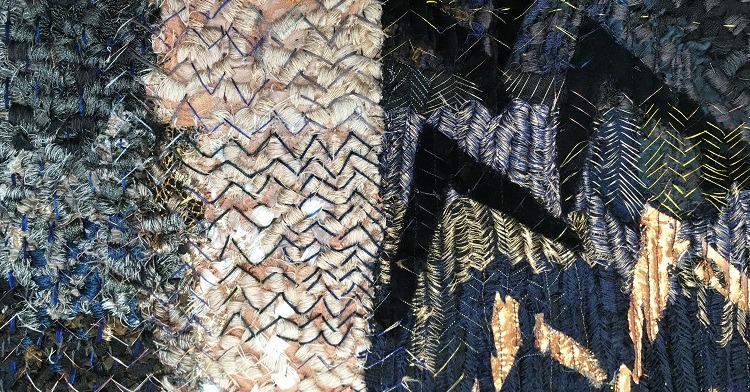
10 comments
Janice Jamieson
I love knowing the story behind the art. At first glance, it was ‘why would they use hair’ then you read the story and it totally makes sense. I am sure your mother was deeply touched by this.
I have been trying for some time to figure out what I want to reflect my journey over the past 30 years with Fibromyalgia. All it has robbed me of, and what it has given me. Perhaps now I can find my story in my own stitches.
Thank you.
Teresa
Thank you for sharing this piece. It really touched home with me, and I hope you have given me the courage to let some of my issues come out in my art. I see just how powerful it can be.
Jacki Biller
Thank you Stacey for giving me some much needed encouragement to tell my story. I’ve been practicing my art for several years now and only in the last few months have I felt that the time has come for my art to become more personal. It’s scary but exciting. Thank-you for sharing your story.
marie claire
Incroyable comme ce qu’explique Stacey Chapman pour son oeuvre ” Loss ” résonne en moi et à ce que j’ai créé les 2 premières années de la maladie de mon mari !
Je trouve fabuleux le lien ,plus qu’un lien mais une poursuite de ce qu’elle veut créer , entre son désir d’exprimer et la taie d’oreille tant vivante par ce qu’elle a vécu . Ce qui m’impressionne aussi est le temps qu’il lui a fallu pour arriver à la conception de son projet puis à sa réalisation.
Je suis tout à fait d’accord avec elle quand elle dit : ” le meilleur art provient toujours d’une énergie brute et inexprimée ” .Merci de ce partage .
Ann Holmes
Hello. I am a very mature lady whom I am afraid to say gets annoyed that we now have ‘ slow stitch’ as if it is a new invention. Please can we go back to the old terminology ‘ hand stitching’ . Hand stitching always was and is slow. The only way to do ‘fast stitch’ is via a machine. It seems Ihave been slow stitching since my mother taught me.
Stacey Chapman
Thank you for your comment and I can understand what you say. I will certainly bear it in mind when moving forward when describing my work. I can understand thinking that it is a shame when new descriptions of practices as old of time are renamed.
I guess I see it as a descriptive word to express this traditional practise in this new ultra busy, non stop World that we inhabit. And therefore because the environment is so different to 30+ years ago, then maybe this change of context prompted the need for the description. The speed of making has stayed the same, but the vehicle in which we ride this heady, fast daily life has speeded up considerably and therefore, the sewing seems slower.
All the best and thank you for your comment.
rose
this is a powerful and personal piece of work, a tribute to you and you mother. i saw a piece of work at (i think) a knitting and stitching show at ally pally (Alexandra Palace, London) which was a story told in cross stitch of human hair. your piece has,to my mind, echoes of this as both subjects dealt with can be misunderstood .
Stacey Chapman
Thank you very much and I am so glad you found the work powerful. I am sorry to say it wasn’t my work at Ally Pally, but I would certainly like to see this work. This is the first tome I have worked with my hair, but have plans for more. I hope you will like these too.
All the best and thank you again for taking the time to comment.
Maris Sharp
I am sorry but I don’t understand this modern compulsion to publicly vomit all our deepest woes. This need for strangers to comment on whatever you have been through. Does it make the experience more real? Does it provide some sort of comfort? Is the monetising of it a necessary adjunct? I am sure I will get a lot of diatribe in response – it seems people are now conditioned to have an opinion on anything and everything – mostly without knowledge.
Stacey Chapman
Thank you for taking time to reply to the feature about my work. I have thought deeply about response and will continue to do so. Thank you for that, as it will be helpful to consider moving forward.
I am sorry that it wasn’t to your liking. My training is in fine art as well as illustration and I approach my art work from this angle. The more personal the work and the more difficult the subject matter is, it tends to resonate more powerfully with viewers. I have found this to be true with the feedback I have had from the two exhibitions the pillowcase has been shown in.
I would like to say that although selling the work would help fund my artistic practise, the making of the work to explore this personal subject is 99% of the drive behind making as it, is a cathartic process. Plus, with experience, I also know that the best artwork works on multiple layers.
Making attractive work without the deeper purpose of touching others souls is much easier for any artist or crafts person, but it doesn’t tend to stay with the viewer long after they have experienced the artwork. Even if the resonated feeling does not have a positive slant, to create impact due to the truth behind the work is my desire, and fits with my training. That is because I was taught good art should stir the soul as well as the eye, with the described translated energy speaking deeply, without words.
I have been creating artwork for a number of years that works merely visually, whilst suppressing the strong desire to create more meaningful work. That is because it is extremely frightening to express your deepest experiences and publicly “vomit” your soul. Yet the dance between the almost need to create the work and the fear of publicly outing it, is delicate and nuanced. The thing that makes showing it worth breaking through the fear to do so, is that it might just help, even one viewer, express some unexpressed and difficult emotion. Or maybe prompt a healing conversation. You pay the price of vulnerability by daring to open yourself to criticism of your deepest self which can be very painful. But it is worth it if you know that daring to do so could help healing or inspire someone else’s creative practise.
I hope that helps with your questions and comments.
All the best and thank you.